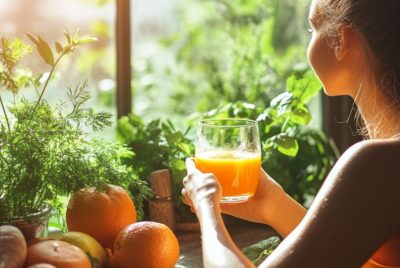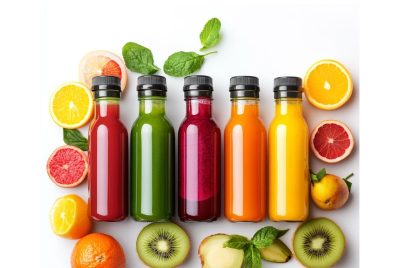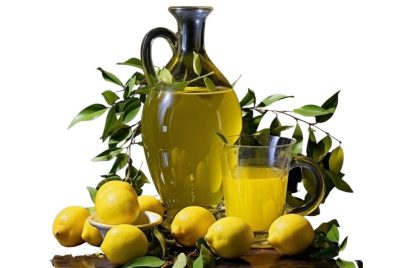Insights About How Juicing Can Contribute to Self-Care Routines
As a juicing enthusiast , I can’t wait to share the wonders of juicing and how it can seamlessly blend into your self-care routine. Juicing is not just a trend; it’s a fantastic way to boost your well-being and nourish your body with essential nutrients. In this post, we’ll explore the art of juicing, the myriad of benefits it offers, and how you can incorporate it into your daily life. Let’s get started!
What is Juicing?
Juicing involves extracting the liquid content from fruits and vegetables, leaving behind the fiber-rich pulp. This process allows you to consume a concentrated dose of vitamins, minerals, and antioxidants in an easily digestible form. By sipping on freshly prepared juices, you’ll give your digestive system a break while flooding your body with nutrients.
Benefits of Juicing
- Nutrient Intake: Juicing enables you to consume a diverse range of fruits and vegetables, providing your body with a broad spectrum of essential nutrients it craves.
- Hydration: Proper hydration is vital for overall health. Juices are a delicious way to stay hydrated, especially for those who struggle to drink enough water throughout the day.
- Detoxification: Certain fruits and vegetables possess natural detoxifying properties, helping your body eliminate toxins and promoting a healthy liver.
- Digestive Health: The abundance of enzymes in fresh juices aids digestion and can alleviate digestive issues like bloating and indigestion.
- Immune System Boost: Packed with vitamin C and other immune-boosting compounds, juices can fortify your body’s defenses against illnesses.
Getting Started with Juicing
- Choosing the Right Juicer: There are various types of juicers available, so pick one that suits your needs and budget. Centrifugal juicers are faster, while masticating juicers retain more nutrients.
- Selecting Fresh and Organic Produce: To get the most out of your juices, opt for organic and locally sourced fruits and vegetables. This ensures they are free from harmful pesticides and retain maximum nutrients.
- Basic Juicing Recipes: Start with simple recipes that combine your favorite fruits and veggies. Gradually experiment with new ingredients to find your perfect blend.
Incorporating Juicing into Your Self-Care Routine
- Morning Elixir: Kickstart your day with a vibrant juice that includes ingredients like spinach, apple, lemon, and ginger. It’ll awaken your senses and provide a nutritional boost.
- Post-Workout Refuel: Replenish your energy levels and aid muscle recovery with a refreshing juice containing beets, carrots, and a splash of coconut water.
- Evening Relaxation: Create a calming evening ritual by sipping on a juice made from cucumber, celery, pineapple, and a hint of mint. It’s the perfect way to unwind.
Juicing for Specific Health Goals
- Weight Management: Certain juices can support weight loss efforts by curbing cravings and increasing metabolism. Consider blends with green vegetables and citrus fruits.
- Clearer Skin: Hydration and nutrients from juices contribute to a radiant complexion. Carrot and papaya juice can work wonders for skin health.
- Boosting Energy Levels: Feeling sluggish? Reach for a juice with beets, kale, and oranges to invigorate your body and mind.
- Supporting Immune Health: Strengthen your immune system with juices containing citrus fruits, ginger, and turmeric.
Precautions and Limitations of Juicing
- Sugar Content: While natural sugars in fruits are better than added sugars, it’s essential to be mindful of your overall sugar intake from juices, especially if you have diabetes or are watching your sugar levels.
- Nutrient Balance: Although juicing offers an array of nutrients, it lacks the fiber found in whole fruits and vegetables. To maintain a balanced diet, incorporate whole foods as well.
- Medical Conditions: If you have specific health conditions or are taking medication, consult your healthcare provider before significantly increasing your juicing habits.
Tips for a Sustainable Juicing Routine
- Reducing Food Waste: Use leftover pulp creatively in recipes or compost it to minimize waste.
- Composting: Create nutrient-rich compost using juicing waste, contributing to a more sustainable environment.
- Repurposing Pulp: Pulp can be used in muffins, soups, and smoothies, adding an extra dose of fiber and nutrients to your meals.
Here are Five Exciting Juicing Recipes You Could Consider.
- The Refreshing Reset
- 2 medium-sized cucumbers
- 4 stalks of celery
- 2 green apples
- A handful of kale leaves
- 1 lemon
- A piece of ginger (about an inch)
- Sunrise Sweetness
- 2 large carrots
- 2 oranges
- 1 sweet potato
- A piece of turmeric (about an inch)
- The Berry Boost
- 1 cup of blueberries
- 1 cup of strawberries
- 1 large beetroot
- 1 lemon
- Tropical Tranquility
- 1 cup of pineapple
- 1 mango
- 1 cup of coconut water
- A piece of ginger (about an inch)
- Green Goddess
- 1 bunch of spinach
- 1 green apple
- 1 cucumber
- 2 stalks of celery
- 1 lemon
- A piece of ginger (about an inch)
Remember, the key to enjoying these juices is to have them fresh and to mix up your ingredients frequently to ensure a range of nutrients.
Conclusion
Juicing is a delightful and healthful addition to any self-care routine. Embrace the goodness of fresh, nutrient-packed juices to nourish your body, support your well-being, and enhance your overall quality of life. Remember, juicing is all about balance and enjoyment. Savor the flavors, experiment with recipes, and embrace the journey to a healthier you.
FAQs
- Is it better to drink juices on an empty stomach?While there’s no strict rule, many people find that drinking juices on an empty stomach allows for better absorption of nutrients.
- Can I replace meals with juices? While juices can be a great addition to your diet, it’s essential to have balanced meals that include protein, healthy fats, and whole grains.
- How often should I juice? The frequency of juicing depends on your individual preferences and health goals. Some people juice daily, while others do it a few times a week.
- Are green juices only made with leafy greens? Green juices typically contain leafy greens, but they can also include cucumber, celery, and other green vegetables.
- Can I store juices for later consumption? Fresh juices are best consumed immediately to retain maximum nutrients. However, you can store them in airtight containers for up to 24 hours if necessary.
Happy juicing! 🍏🥕🍋🍍🍓
Here are two links to webpages that share scientific studies related to the content of the article:
Fruits and Vegetables latest superpower? Lowering blood pressure
- Fruits and vegetables’ latest superpower? Lowering blood pressure – This article from Harvard Health discusses the benefits of a diet rich in fruits and vegetables, which is the basis of juicing, in lowering blood pressure.
- Nutrition and mental health: the power of food – This article from the Cambridge University Press journal discusses the link between nutrition and mental health. It elaborates on how certain foods and dietary patterns, such as those provided by juicing, can influence mental health.




